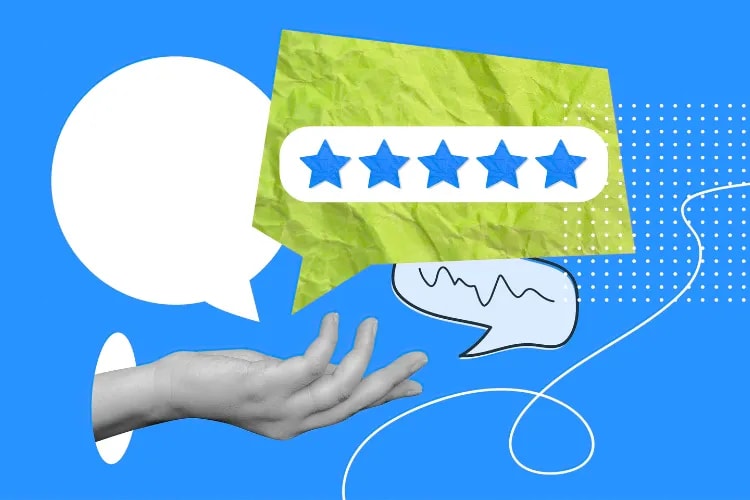
Every attendee leaves with opinions—about your content, venue, check-in, networking, and whether the event was worth their time. The fastest, most reliable way to capture those insights (before memory fades) is a well-designed post-event survey. Done right, it does more than gather opinions; it gives you a prioritized roadmap to improve your next event and the social proof to market it.
In this guide, we’ll show you how to design post-event surveys that people actually complete, share the best questions to ask (with suggested scales), and walk through how to analyze responses and act on what you learn. The goal: help you collect actionable feedback that boosts satisfaction, increases repeat attendance, and strengthens ROI.

The Loopyah Content Team shares expert insights, practical guides, and industry updates to help event organizers create unforgettable experiences and stay ahead in the event planning world.
marketing
Post-event surveys matter because they connect what you planned with what attendees actually experienced—and they do it at the perfect moment to drive change. You’ll use them to measure success, diagnose friction, and seize a short window after the event when excitement is still high and people are most willing to share candid feedback.
Benefits you can bank on:
Improve future events: Spot what to double down on (popular formats, standout speakers) and what to fix (AV, wayfinding, session pacing).
Measure event success: Track satisfaction, Net Promoter Score (NPS), content relevance, and networking value to benchmark year over year.
Understand attendee satisfaction by segment: Compare first-timers vs. veterans, VIPs vs. general attendees, or function/industry to personalize next year’s experience.
Identify high-ROI improvements: Prioritize operational fixes—check-in speed, seating, signage—that remove friction across the attendee journey.
There’s also an ROI angle: research on event engagement shows a chunk of meaningful interactions happen after the show wraps, making the post-event window critical for follow-up and learning. A concise survey helps you capture momentum and convert insights into action. (See research-backed strategies to extend engagement)
Great surveys are short, mobile-first, and frictionless. Use these principles to maximize completion and data quality:
Keep it brief: Aim for 10–12 minutes max, ~12–15 questions. Trim anything that isn’t essential to decisions you’ll make.
Mix question types: Use ratings (5- or 7-point scales), multiple choice, and sparing open-ended prompts. Offer a neutral option when appropriate to reduce measurement error.
Design for mobile: Avoid matrix grids and long text boxes; keep pages short; test load speed and readability on phones.
Ensure anonymity and set expectations: Open with a short intro that states the purpose, confirms responses are anonymous, and shares how long it will take.
Test and validate: Dry-run your survey on multiple devices, check skip logic, and fix any confusing wording before you press send.
“Design for the smallest screen and the shortest attention span to maximize response rates and usable insights.” Kantar survey design guidance (2024) source
Tooling: You don’t need enterprise software to run a great post-event survey. SurveyMonkey, Google Forms, and Microsoft Forms all support mobile, logic, and quick exports. If you use Loopyah to manage your event communications, you can email the survey to segmented attendee lists directly with our Email Event Attendees feature to personalize outreach and automate reminders.
Below are core question sets you can copy, adapt, and drop into your tool of choice. We’ve included suggested scales and optional “Why?” follow-ups to capture context without overburdening mobile users.
Goals: understand overall experience, expectation matching, and loyalty.
Overall, how satisfied were you with the event? (1 = Very dissatisfied, 5 = Very satisfied)
Did the event meet your expectations? (Exceeded / Met / Fell short / Not sure)
How likely are you to recommend this event to a friend or colleague? (0–10 NPS scale)
About NPS: Score 9–10 as promoters, 7–8 as passives, and 0–6 as detractors. Your Net Promoter Score is % promoters minus % detractors. Use it alongside your event-specific metrics to benchmark year over year.
Goals: validate content relevance, speaker quality, and format preferences for next year’s agenda.
How would you rate the quality of the presentations overall? (1–5 scale, include neutral)
How relevant was the content to your interests and needs? (Not at all / Slightly / Moderately / Very / Extremely)
How engaging and credible were the speakers? (Separate 1–5 ratings for engagement and expertise)
Optional specifics: Ask attendees to rate individual sessions they attended and offer a quick multiple-choice on preferred formats (keynote, workshop, panel, roundtable). Close with an open text box asking: “Which topics should we deepen or drop next year?” This keeps your agenda aligned with evolving interests.
Goals: measure the quality of connections, not just the quantity.
How valuable did you find the networking opportunities? (1–5 scale)
Were there enough opportunities to interact with peers and speakers? (Yes / No / Not sure)
Did you make valuable connections at the event? (Yes, several / Yes, a few / Not really / No)
Follow-ups to consider: “Which networking formats worked best for you?” (topic-led roundtables, 1:1 matches, hosted buyer meetings, social mixers) and “What could improve networking value?”
Goals: pinpoint operational friction so you can remove it next time.
How would you rate the venue and facilities (seating, temperature, AV, accessibility)? (1–5 scale)
Was the event well-organized and easy to navigate? (Very easy / Easy / Neutral / Difficult / Very difficult)
How satisfied were you with the registration and check-in process? (1–5 scale)
Add a short safety/comfort item if relevant: “I felt comfortable with the event’s safety and health protocols” (1–5). If check-in was a pain point, consider upgrading your tech—our guide to the best event check-in apps shows what to look for to speed lines and reduce errors.
Goals: capture context and surprises without creating fatigue.
What was your favorite part of the event? Why?
What could we have done to make the event better?
Is there anything else you’d like to share with us?
Tip: Limit free-text to 1–2 boxes plus targeted “Why?” prompts after key ratings. This keeps your survey breezy on mobile while still gathering rich, quotable insights.
Collecting feedback is only half the job. The organizers who win with post-event surveys do two things exceptionally well: they focus analysis on the attendee journey, and they close the loop fast by telling people what changed.
A simple analysis plan you can follow:
Clean and segment: Remove obvious duplicates, check partials, and segment by attendee type (role, company size, first-time vs. returning).
Map responses to the journey: Group your findings under Registration, Content, Networking, and Logistics. This is how you’ll assign owners and make improvements stick.
Prioritize by impact: Identify the 3–5 issues with the biggest effect on satisfaction or NPS—like slow check-in, irrelevant sessions, or weak networking structure.
Assign owners and deadlines: Turn each priority into a task with a clear owner (content lead, ops lead, marketing lead) and a target date.
Close the loop: Within 30 days, email attendees a short recap of what you learned and what will change next year. This increases trust and future response rates.
Case examples to illustrate action:
TechNow Summit (B2B): Attendees rated content relevance 3.4/5 and called for deeper technical breakouts. The team added two tracks of hands-on labs and replaced one panel with live demos. Session relevance rose to 4.2/5 the next year, along with a 9-point NPS lift.
GreenFest (consumer festival): Surveys flagged long entrance lines and confusing signage. Organizers introduced QR pre-check, more scanners, and color-coded directional signs. Median check-in time dropped from 11 minutes to 4, and logistics ratings jumped from 3.1 to 4.3/5.
Sales Leadership Forum (association): Networking was rated “plentiful but unfocused.” The team added topic-led roundtables and peer matching. The share reporting “valuable connections” rose from 48% to 72%.
If you’re managing attendee communications in Loopyah, you can streamline this step: segment recipients by ticket type, personalize the recap email, and include links to session decks or on-demand content as a soft incentive to revisit your brand.
Here’s a practical playbook to get more—and more representative—responses to your post-event surveys.
Timing: Send within 24–48 hours while the experience is fresh. Weekday late morning or early afternoon often performs well; test with your audience.
Incentives: Offer a modest post-paid incentive (e.g., $5 gift card, discount on next year’s ticket, access to VIP content). Small, guaranteed incentives beat big raffles for driving completions.
Communication: Keep the invite short. State the value (“Help us improve next year’s experience”), confirm anonymity, and include a realistic time estimate.
Follow-up: Send one concise reminder 2–4 days later. Cap at two total emails to avoid fatiguing your list.
Sample schedule:
Day 0 (event close): Tease the survey in your closing remarks and push a QR on screens.
Day 1: Send the survey email at ~10:30 a.m. with the incentive stated and a 3–5 minute estimate.
Day 3–4: Send one reminder (keep it even shorter, restate the incentive, and add the deadline).
Day 7–10: Close the survey, start analysis, and prep your “You said, we did” recap.
Email optimization tips: write clear subject lines (e.g., “2-minute survey to shape next year”), include the survey link above the fold, and place the incentive details near the button. If you already run email programs with Loopyah, tap our Event Email Marketing Strategy guide to tighten your copy and cadence.
Keep the survey experience itself ultra low-effort: short pages, prominent progress bar, and large tap targets on mobile. Avoid jarring channel transitions (e.g., making respondents log in mid-survey). The smoother the flow, the higher your completion rate.
Remember, response quality beats raw volume. It’s better to get 25–35% clean, representative data from your primary attendee segments than 10% random responses skewed by power users.
Steal this structure and you’ll stay under ~12 minutes while capturing the insights you need:
Intro (10–20 seconds): Purpose, anonymity, time estimate, thanks.
Satisfaction (3–4 items): Overall satisfaction, expectations met, NPS + “Why?”
Content & Speakers (3–5 items): Relevance, quality, engagement, topic wishlist.
Networking (2–3 items): Value, enough opportunities, formats that worked.
Logistics (3–4 items): Venue/facilities, navigation, check-in, safety.
Open-Ended (1–2 items): Favorite part, one thing to improve, final comment.
Build it in your preferred tool and distribute via your email platform. If you’re using Loopyah, set up a segmented send with the Email Event Attendees feature.
Post-event surveys are your most reliable lever to learn fast and improve faster. Keep them short and mobile-first, ask the questions that matter, and analyze by journey stage so each owner knows what to fix. Then—most importantly—close the loop by sharing what changed. Do this consistently, and you’ll see higher satisfaction, stronger NPS, and more repeat attendance with every edition.
Ready to launch a survey that gets results? Loopyah makes it easy to email segmented attendee lists, automate reminders, and showcase improvements next year.
planning
planning
planning
planning
planning
marketing
growth
planning
planning